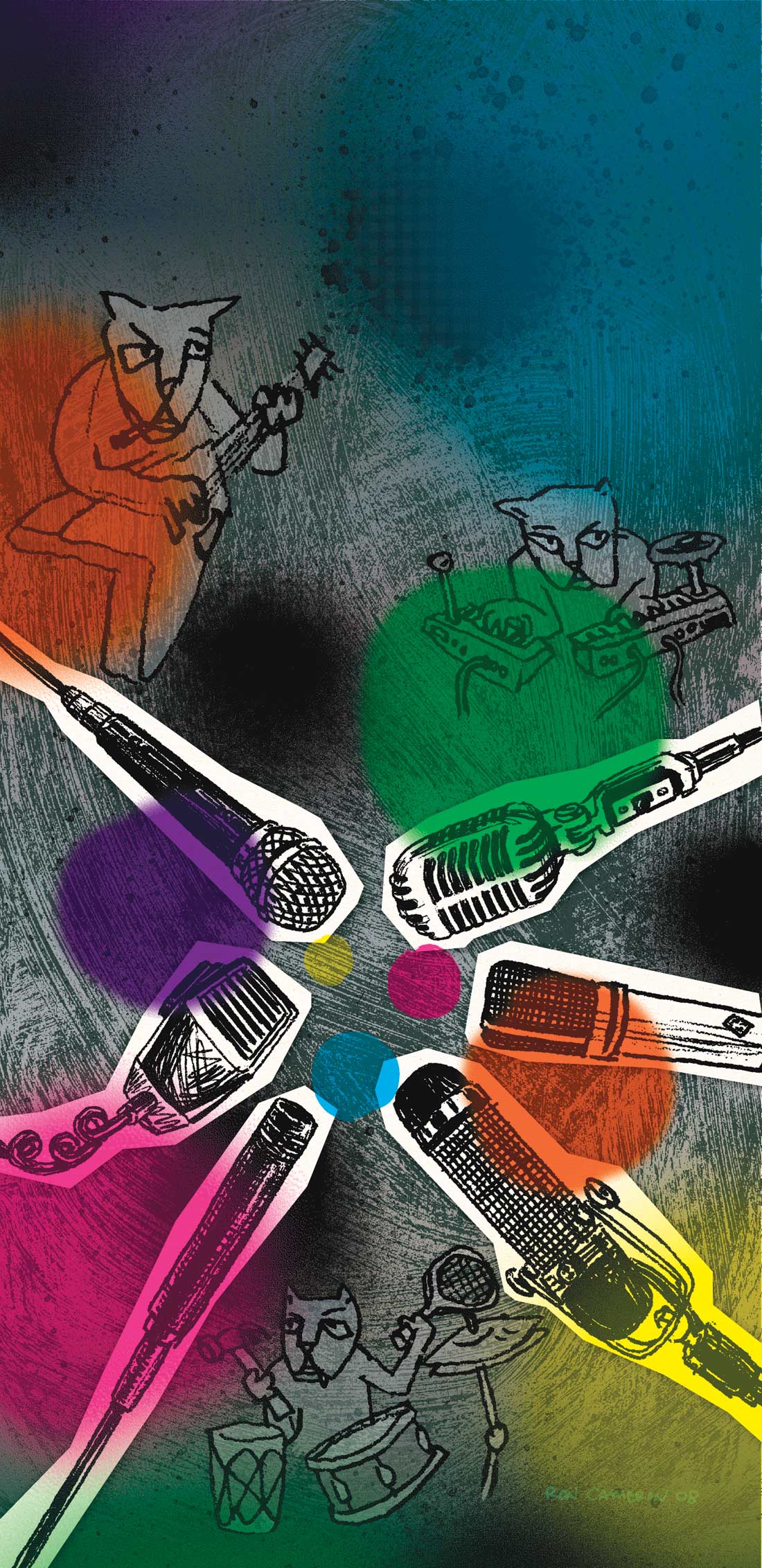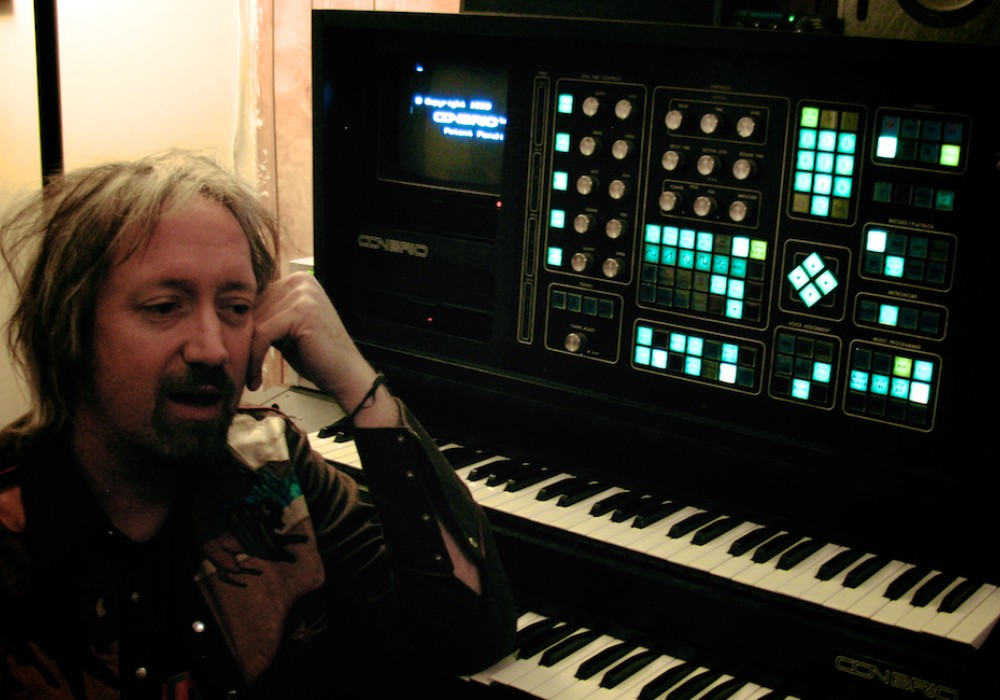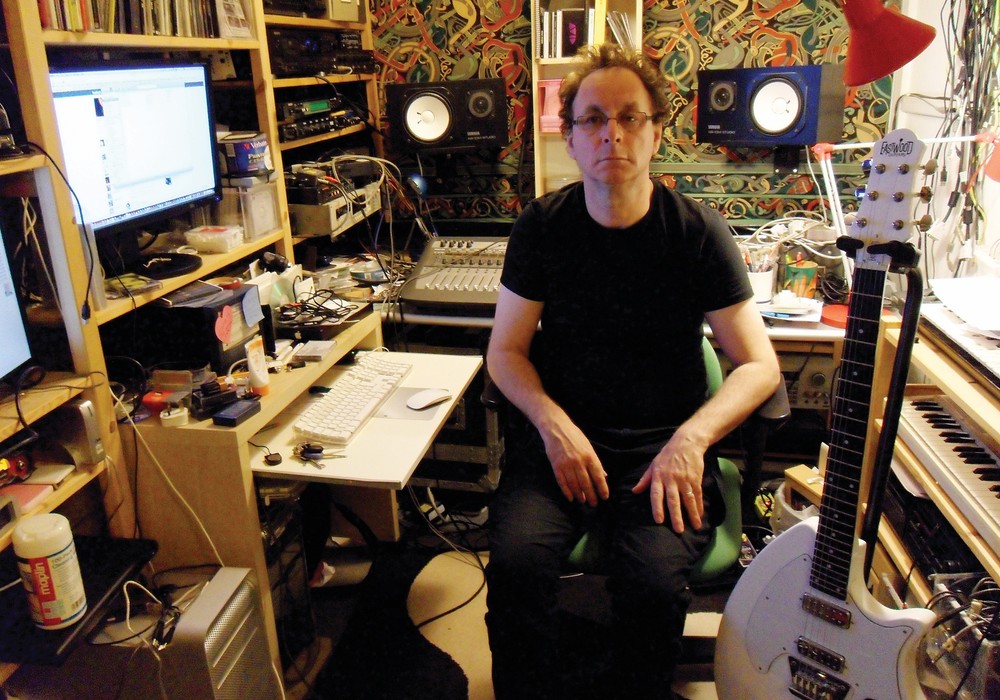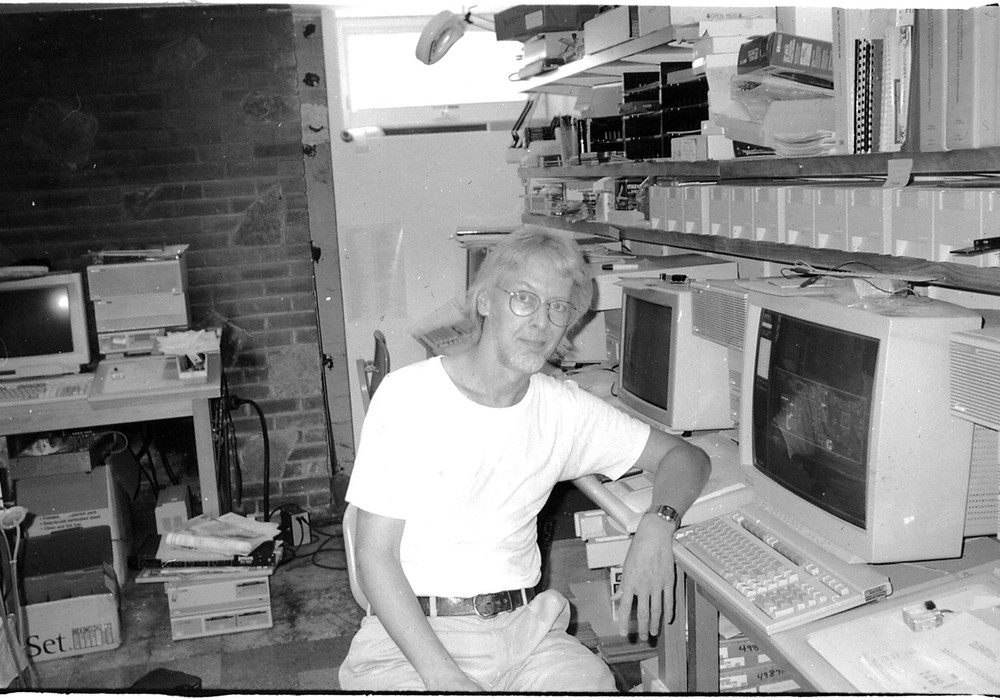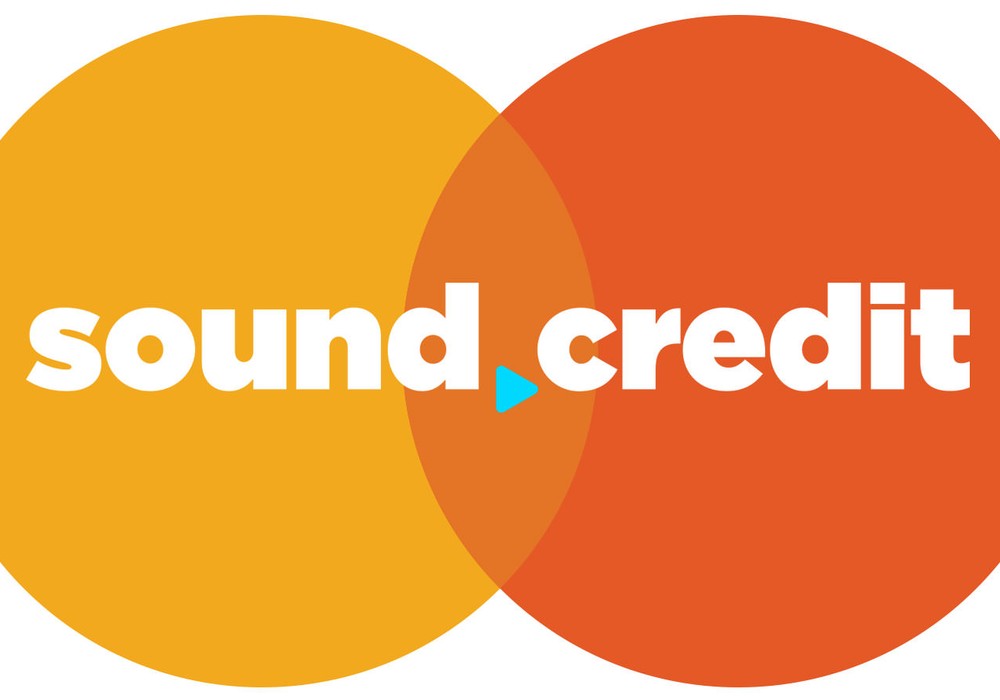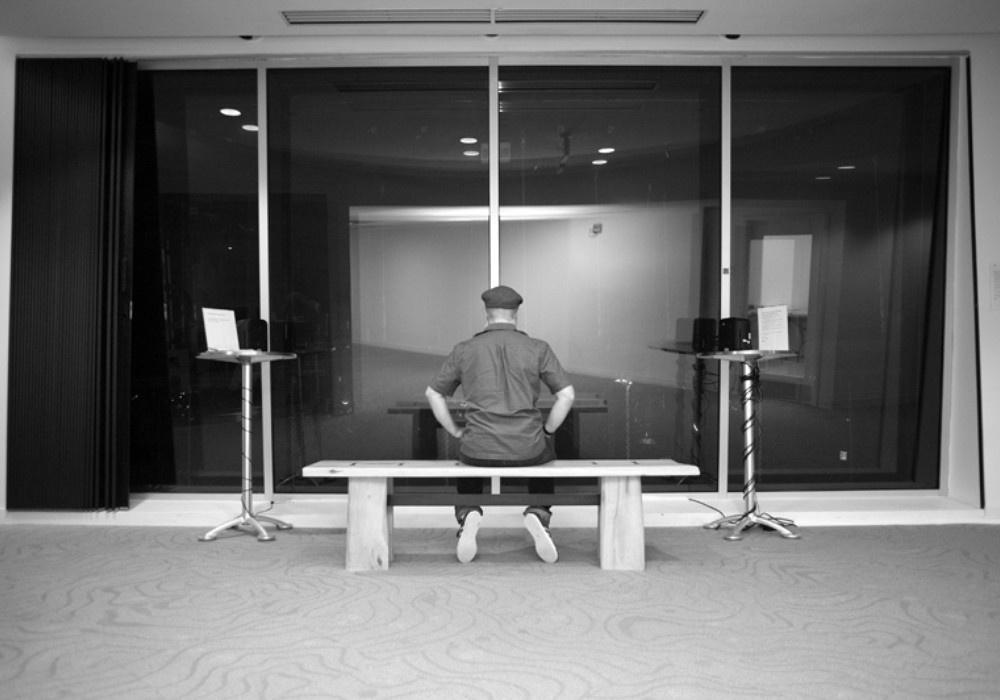One of the biggest stumbling blocks for first-time recordists is capturing acoustic guitars.
There are many ways to mic these instruments, and also many ways to go astray. Good mic preamps and good mics are important, but having those mics in the right places is the most important.
Here is a "default" recipe for acoustic guitar. There's an ideal situation: great room, great instrument and great player. Probably not all of these show up at the same time, but let's at least assume no one is singing while playing the guitar — that would be a whole different article.
The main thing is that two mics in the wrong place are worse than one in the right place. First, get close and listen to the guitar with one ear (with your finger in your other ear), and see what the guitar sounds like and where it sounds good. Then try to get the speakers to sound like this. Don't start by putting a mic right in front of the soundhole, as it's too much like recording in a boomy tunnel (same goes for putting a mic inside a kick drum, in my book). If you simply put a cardioid mic near the end of the neck where it meets the body, facing toward the player's picking fingers at around a 45-degree angle to the neck, you can generally get a sound that isn't too bumpy and full of resonances and one that will fit in well with other instruments in a mix. A little below the fingerboard might be good, and pretty close in, maybe a spread-finger's length away to start. Listen and move it incrementally till you like it. Usually a condenser mic is a good first choice, maybe a little one (they are more brisk), but try a good dynamic like a Shure SM7 — you may be surprised. If you are going to want it to be stereo (which is not how it would realistically sound in a room with other, louder instruments), then grab the X/Y bar you bought for the overheads last issue and try that. If it's being played with a pick, before you EQ the tracks try some different picks and thicknesses! Then you can record it flat, maybe with a low-end roll off, and figure out the rest later.
There is no one right way to record acoustic guitar. But if you are recording for the first time, you can bring a smile to your mixing engineer's face later by starting out with the above recipes.
www.chrisstamey.com
